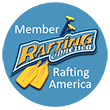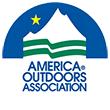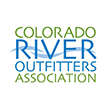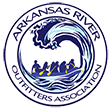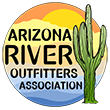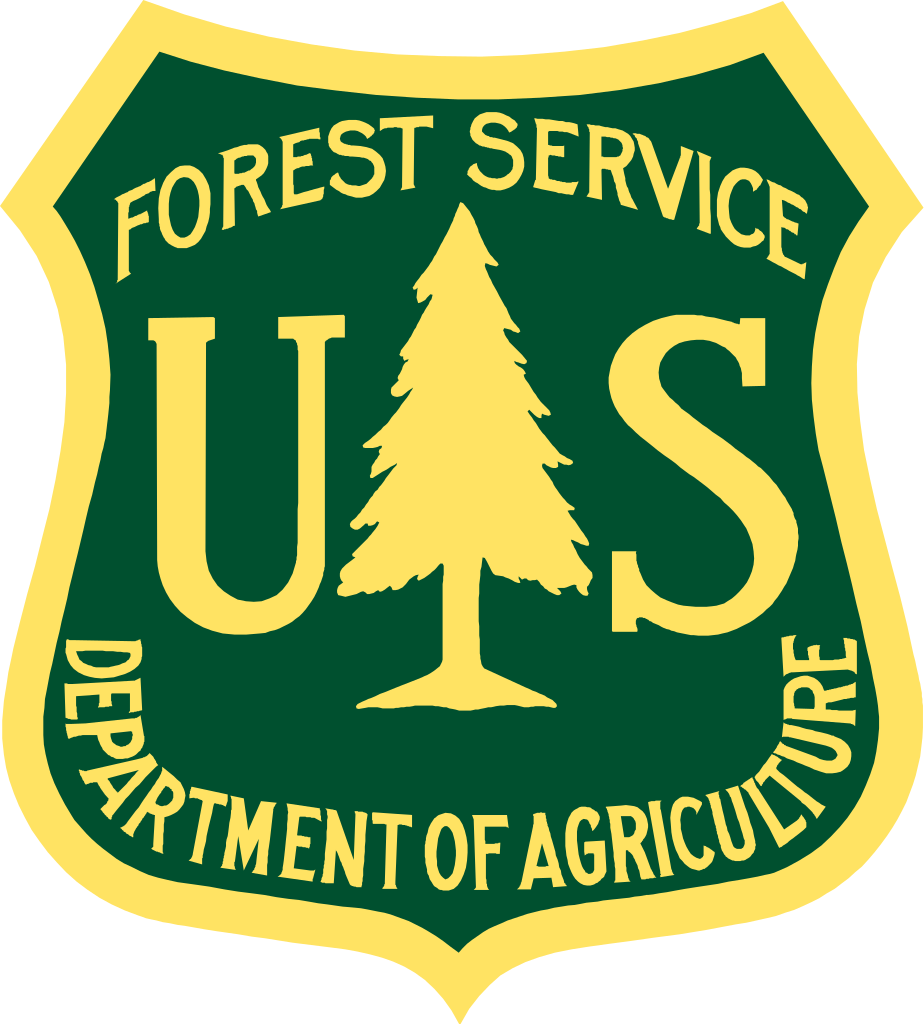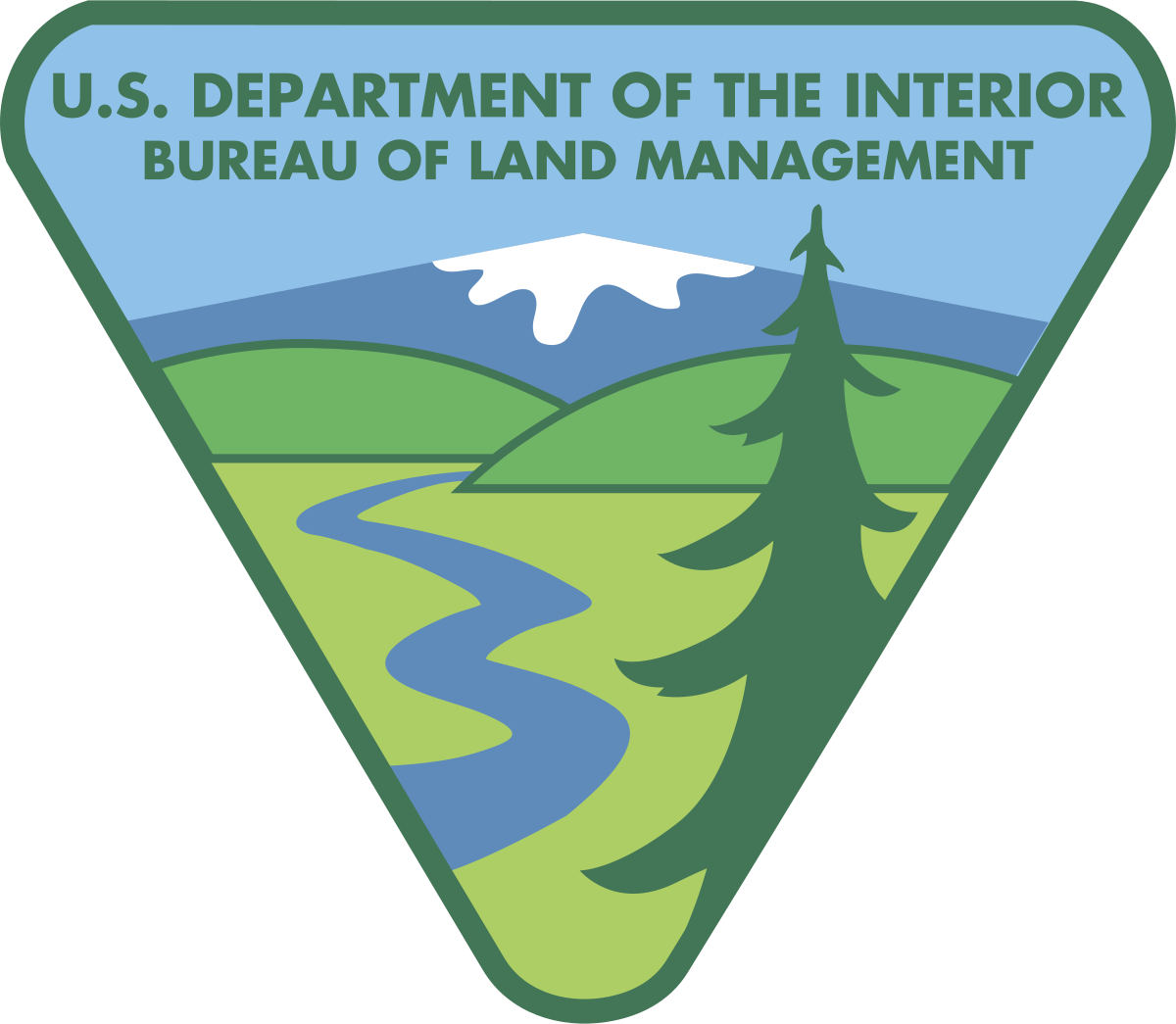Exercises to Prepare Yourself for Whitewater Rafting & Other Paddling Sports
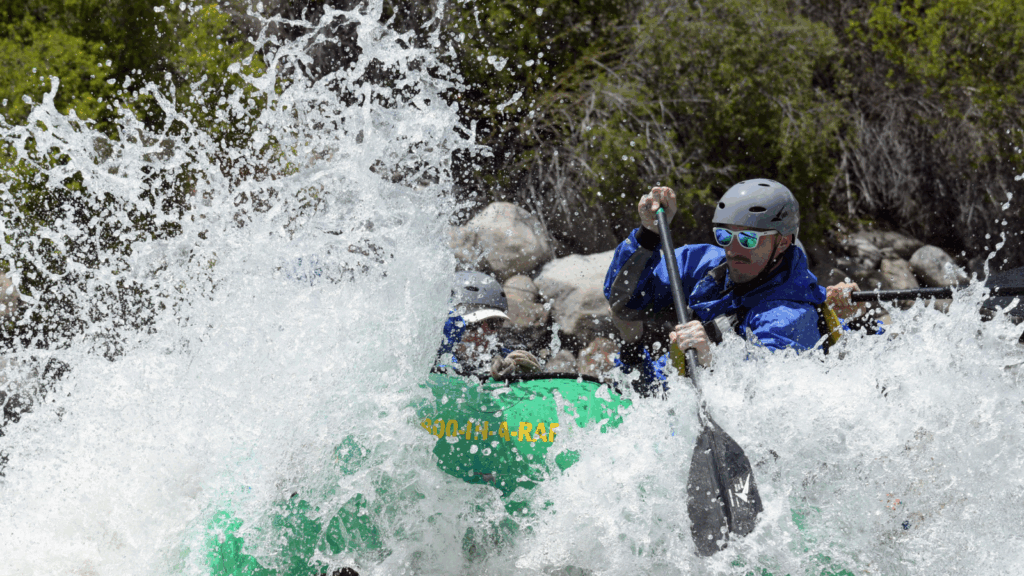
If it’s your first time or your 500th time whitewater rafting, canoeing, kayaking or rowing, preparing your body for the physical stamina and strength required will make your experience more enjoyable and your physique admirable. Similar to any other sport, working out and stretching specific core muscles makes paddling much easier and you’ll be less likely to injure yourself. Although these activities seem to only require your arms and upper body, you’ll actually be using your core a lot if you are paddling efficiently and to maintain your balance. Some people mistakenly focus only on their upper body and forget about their bottom half—Pro Tip: don’t forget to work out your legs since you only need them to hold up your upper half. Increasing Endurance Whitewater rafting, kayaking, and other paddling adventures require sustained energy and cardiovascular fitness. Without a strong endurance base, you’ll tire quickly and may struggle to keep pace with your group. The good news? You can train for it off the water with simple, effective workouts that boost stamina and heart health. Endurance Tips for Rafters and Kayakers: Incorporate Cardio Cross-Training: Biking, running, swimming, and rowing are all excellent low-impact ways to build cardiovascular endurance. Add Intensity with Intervals: Mix in short bursts like 30-second sprints, uphill climbs, or circuit-style training to push your aerobic capacity. Start Small, Then Build: Begin with just five minutes of steady cardio, and increase duration gradually as your stamina improves. Hydrate Before You Train: Pre-hydration is key—drink water beforehand to keep your body performing well throughout your workout. Fuel with Smart Carbs: Eat complex carbs like oatmeal, whole grain toast, or Greek yogurt with fruit before your session for sustained energy. Recover with Protein: After your workout, refuel with protein-rich snacks like a smoothie, peanut butter and banana, or a protein shake to aid recovery and muscle repair. Training your cardiovascular system before hitting the water ensures you’ll be ready to paddle strong, without gassing out in the first rapid. Increasing Strength Building strength is crucial for paddling power, endurance, and injury prevention. “Strength training is a key component of overall health and fitness for everyone,” and it “can also protect your joints from injury,” according to the Mayo Clinic. The more strength you have, the more water you can pull with each stroke—and your team will be counting on you to pull your weight. Whitewater rafting and kayaking rely heavily on your shoulders, arms, wrists, and core, so it’s important to get these muscle groups used to repetitive motion. Targeted strength training improves control, boosts stamina, and helps prevent common injuries like shoulder strain from overexertion. Top Strength Exercises for Rafters: Push-Ups: Strengthen your chest, shoulders, and triceps while engaging your core. Pull-Ups or Rows: Develop back and arm muscles for stronger strokes and better posture. Overhead Press: Boost shoulder endurance for long paddling days. Planks: Build core stability, which helps with balance and bracing in the raft. Tricep Dips: Improve arm control for quick, precise movements. Aim to train 2–3 times per week using bodyweight or light weights. Focus on form and endurance over heavy lifting. Strong muscles won’t just improve your performance—they’ll help prevent injury and keep you paddling longer. Prior to strength building, consume some low GI carbs and protein like a spinach and egg omelet or a smoothie with protein powder. Always pre-hydrate. Follow up your exercises with a chocolate protein shake or half of an avocado with cheese and tomato and a healthy serving of water. Increase Flexibility Building strength and endurance is essential—but it won’t mean much if an injury takes you off the water. To stay healthy and paddle-ready, flexibility and proper recovery are just as important. Incorporating dynamic warm-ups, cooldown stretching, and good hydration habits can go a long way in preventing cramps, strains, and fatigue. Stretching and Injury Prevention Tips: Warm Up First: Get your body moving with 5 minutes of light cardio before stretching—this helps loosen muscles and prevents strain. Stretch During Cooldowns: After workouts, dedicate time to slow, controlled stretching to increase flexibility and reduce soreness. Target Key Areas: Focus on shoulders, arms, back, and hips—muscles most used in paddling. Cross-body arm stretches and shoulder rolls are especially effective. Improve Posture: Standing and sitting with good posture keeps your spine aligned, engages your core, and prevents lower back discomfort during long paddling sessions. Hydrate to Prevent Cramps: Not drinking enough water before or after activity can lead to muscle cramps and fatigue, so keep that water bottle handy. Adding flexibility and recovery practices to your training routine helps you stay limber, reduce your risk of injury, and show up ready for adventure every time you hit the river. Heading to the Water Before you jump right into the water, take a moment to warm up your muscles whether it’s jogging, sprints, or lunges. Then stretch your shoulders, arms, wrists, legs, and back. This way, your muscles are loose and ready to rock and roll. Make sure your reusable water bottle is filled, you’ve had a few swigs of that, and your snack is safe in your belly. Protect your skin by applying a water-resistant sunscreen to prevent painful burns from the sun reflecting off the water. If you’re wearing sunglasses (recommended), use a strap on the arms so you don’t risk losing them if they fall off. Lastly, get your helmet and life jacket on, have fun and enjoy whitewater rafting, kayaking, canoeing or rowing as you’re feeling stronger and more flexible. Check out the white water rafting trips we have available at Wilderness Aware Rafting or contact us for more information. See you on the river! FAQ’s for Preparing Yourself for Whitewater Rafting Why is strength training important for whitewater rafting? Strength training builds the upper body and core muscles needed for powerful, controlled paddling. It also helps prevent injuries like shoulder strain by preparing your muscles for the repetitive motions of rafting. What are the best exercises to prepare for paddling sports? Effective exercises include
8 Facts You Didn’t Know About the Arkansas River
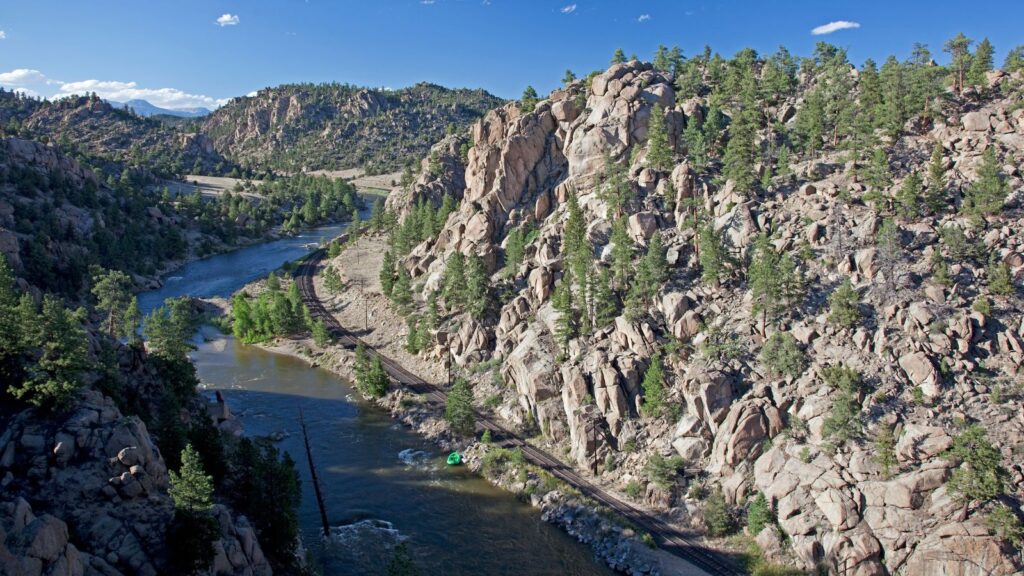
Facts about the Arkansas River are as fascinating as the thrilling rapids it offers. This iconic waterway has played a key role in shaping both American history and the landscape of modern adventure. While many are familiar with the Arkansas River for its world-class rafting, few know about its rich historical significance and unique geological features. Since 1976, Wilderness Aware Rafting has been navigating these waters, gaining deep knowledge of the river’s currents, history, and hidden treasures. From early exploration and settlement to the powerful rapids of today, here are eight surprising facts about the Arkansas River. Table of Contents 1. It Was Once Part of the U.S.-Mexico Border From 1819 to 1848, the Arkansas River served as the official boundary between the United States and Spanish-controlled Mexico. After the Treaty of Guadalupe Hidalgo, the U.S. expanded, and the river no longer marked the border, but its historical significance remained. 2. A Gateway for the Gold Rush During the 1859 Colorado Gold Rush, prospectors followed the Arkansas River into the Rocky Mountains in search of fortune. The river became a critical travel route, leading settlers toward what is now Leadville, Colorado, a major mining town. 3. It’s the Sixth-Longest River in the U.S. Spanning 1,469 miles, the Arkansas River originates in the Sawatch Range of Colorado and flows through Kansas, Oklahoma, and Arkansas before joining the Mississippi River. 4. Steamboats Once Traveled Its Waters In the 1800s, steamboats navigated the lower Arkansas River, transporting goods and people deep into the heart of the frontier. However, the river’s unpredictable water levels made it difficult for consistent travel, limiting its long-term use for shipping. 5. It Played a Role in the Railroad Boom The Arkansas River became a battleground for railroad companies in the late 1800s. The Royal Gorge War was a heated conflict between the Atchison, Topeka & Santa Fe Railway and the Denver & Rio Grande Railroad, both fighting for the rights to lay tracks through the Royal Gorge for better access to the mining towns of Colorado. 6. It’s Home to One of the Most Famous Rafting Destinations The Arkansas Headwaters Recreation Area (AHRA) is one of the most popular whitewater rafting destinations in the country. Featuring legendary rapids like Browns Canyon, The Numbers, and Royal Gorge, the river attracts thrill-seekers from around the world. 7. Indigenous Tribes Relied on the River for Centuries Long before European exploration, the Ute, Pawnee, Osage, and Comanche tribes depended on the Arkansas River for food, trade, and travel. The river played a crucial role in sustaining indigenous communities throughout the region. 8. The River’s Name Comes from Native American Origins The name “Arkansas” originates from the French pronunciation of the word used by the Quapaw tribe, a Native American group that lived near the river’s mouth. Early French explorers documented their name for the region, and it eventually became associated with the river itself. At Wilderness Aware Rafting, we don’t just run trips on the Arkansas River—we live and breathe the Arkansas River’s history. Our guides are not just fun, engaging and high caliber, they have a wealth of knowledge about human history, the natural world, and love to share their passion for the outdoors! With over 40 years of experience leading rafting adventures, our guides are experts in the rapids, landscape, and fascinating stories that make this river one of the most exciting in the country. Join us for an unforgettable adventure and we’ll explore the Arkansas River—its rich history, stunning natural beauty, and thrilling whitewater rapids!
How to Adjust to Altitude Changes (and Not Get Sick)

Wondering how to adjust to altitude sickness and not get sick? We’ve got 9 tips to help you adjust to altitude and stay healthy at higher elevations. From boosting your water intake and getting plenty of rest to easing into physical activity and increasing your potassium levels, these simple steps can help reduce your chances of getting sick. Keep reading for the full list! Table of Contents There’s no need to end the fun and leave the mountain to alleviate your altitude sickness – this handy guide will help! Here’s how to adjust to altitude changes so you can focus on enjoying your trip. You don’t have to hit the slopes or visit Peru to start feeling the pain from altitude sickness. Whether it’s shortness of breath, nausea, or exhaustion, it can totally wreck your trip. Here’s how you can adjust to altitude quickly and safely, so you can get on to having an amazing trip. What is Altitude Sickness? As you’re going higher in elevation, you start taking less oxygen per breath – this causes altitude sickness. According to the CDC, “If you plan to travel to an elevation higher than 8,000 feet above sea level or higher, you may be at risk for altitude illness, which is caused by low oxygen levels in the air.” – Center for Disease Control and Prevention The process starts at around 5,000 feet, and as you go higher (about 9,800 feet), the odds of experiencing altitude sickness increase substantially. At that altitude, about 75% of people will feel some symptoms. If you’ve never experienced a substantial gain in elevation, chances are you’ll notice some changes in how you’re feeling. Thankfully, there are ways to prepare your body for adjusting smoothly. One thing to note: it’s not just going to these heights that causes the problem – it’s caused more by the speed of ascent. The best way to avoid altitude sickness is to gain elevation slowly, which allows your body to acclimate to the change in elevation. How Long Does It Take to Adjust to Altitude Changes? Your body can take a few days—or even a couple of weeks—to fully adjust to higher altitudes. How long it takes depends on a few things: How high you’re going Your personal genetics Your fitness level How fast you climbed to that altitude What Type of Symptoms Might I Experience? Fortunately, serious symptoms like High Altitude Pulmonary Edema (HAPE) or High Altitude Cerebral Edema (HACE) only happen at extremely high altitudes, far higher than most people will ever go. You are more likely going to experience milder symptoms such as shortness of breath, headaches, and other annoying (but certainly not debilitating) symptoms. How to Adjust to Altitude 1. Drink Lots of Water As you gain altitude, your body tends to lose water and salt faster than you’re used to. When combined with the dry air and physical activity a trip to Colorado usually involves, it’s no wonder dehydration is such a problem. Many of the symptoms of altitude sickness mirror those of dehydration, so consistently drinking water throughout the day goes a long way to getting you acclimatized quickly. 2. Reduce Your Exercise As you gain elevation, the air gets thinner so each breath you draw contains less oxygen. Over time, your body strengthens and adjusts to accommodate this, which is why endurance athletes often train at extremely high altitudes in places such as Peru or Nepal. In the short term, however, your cardiovascular system is working harder. Each breath contains less oxygen, so each heartbeat contains less oxygen, making your heart beat faster. In other words, your body is working harder to do the same thing you would do at sea level. In order to give your body time to adjust, it’s best to take it easy for a few days when you first get to 5,000+ feet. After a few days of moderate activity, you’ll be ready to ramp back up to full throttle. 3. Get Enough Sleep One of the symptoms of altitude sickness is insomnia, so it can be hard to get enough rest. However, a good night’s sleep can do wonders to help you kick the problem. One common suggestion is descending to a lower elevation (if possible) to sleep at night. If this isn’t an option, it’s best just to push on and get through the first few days of acclimation. Don’t underestimate the power of a little cat nap if you can sneak one in during your day! 4. Limit Your Alcohol Intake Alcohol hits a lot harder when you’re trying to acclimatize, so the best thing you can do is take it easy and not drink your first few nights in town. Alcohol often replicates many of the symptoms of altitude sickness (nausea, dizziness, fatigue, light-headedness) so it’s a bit like doubling down on your body in terms of a negative impact. Another reason to lay off on drinking is because of the general challenge it is to stay hydrated while acclimatizing to a higher altitude. Alcohol dehydrates you, so consuming it only worsens your hydration situation. Your safest option is waiting 48 hours before you hit the bars. After this period, you should be acclimatized enough to handle the effects of drinking at altitude. 5. Increase Your Potassium Levels Potassium loss is a pretty standard symptom if you’re feeling dehydrated from the dry air at elevation. It can be a major pain – literally. Muscle cramping is commonly associated with low potassium levels. Fortunately, it’s an easy nutrient to replace. Foods like bananas, avocados, spinach, yogurt, and kale are all high in potassium so getting enough without supplements shouldn’t be too hard (even for the pickiest of picky eaters). 6. Protect Yourself From the Sun At altitude, the air is thinner and as a result, there’s more exposure to the sun. Denver, for example, with an altitude of only one mile (5,280 feet), receives 25% less natural protection from the sun than you’d find at
Answers to Common COVID-19 Questions

As we’ve progressed further into our open rafting season, many of our rafting guests are asking similar questions regarding how we are handling our operation during the COVID-19 crisis. We want to first assure everyone that while we have seen a drastic increase in business, both at our company in our community of Buena Vista, we are staying diligent in our cleaning duties, continue to wear masks and wash our hands regularly. We hope all visitors to our area do the same to keep everyone they come into contact with safe and healthy. To help give you a bit of a heads up on what to expect, here are some answers to our most commonly asked COVID-19 questions: Do we have to wear a mask? Yes! However, only while in our office and in our shuttle vehicles. IT IS REQUIRED by our state (for ALL locations in Colorado), and any guest who feels they cannot adhere to this requirement may consider postponing their rafting adventure until next season. If you arrive for your trip and do not have a mask, you can purchase a bandana from our retail store for $4.00. Guests that do not have masks before trip departure will not be able to participate in their rafting trip and may not receive a refund. Our family/friends would like our own boat. Is that possible? We are currently allowed to run full capacity rafts of seven guests + one guide. If your group size is less than seven, it is likely you will have other guests you are not familiar with sharing a boat with you. With a reduced guide staff, we are doing our best to maximize boat loads. We offer private VIP rafts for groups of less than seven – call for pricing. We strongly recommend that if you are concerned about sharing space with others you are not familiar with, that you consider postponing your rafting adventure to next season. Can I still go rafting if I am traveling from out of town? Yes, however, we ask that if you are visiting us from a location with a high rates of COVID-19 cases, or if you or anyone in your group has been in close contact with a positive COVID-19 case that you stay home and plan on visiting us next year instead. Additionally, if you feel you cannot be diligent enough during your travels by wearing a mask, minimizing contact with others, washing your hands and carrying hand sanitizer that we ask you to please stay home. What are you doing to mitigate the spread of COVID-19? Every one of our employees is required to wear a mask in our building when guests are present, guides wear a mask in the vehicles along with all guests, and everyone is required to use hand sanitizer (provided by Wilderness Aware) before entering the shuttle vehicle. We are sanitizing high contact surfaces at the front desk, including pens, and cleaning restrooms/changing rooms often. Our drivers and guide staff are sanitizing each vehicle between uses, and we are washing rental gear after each use (something we’ve always done!). I’ve been rafting with Wilderness Aware before. Did you change anything about your trips? We did not change anything in regards to trip times, river locations, or the actual rafting experience in response to COVID-19. We did make some changes to what we offer in regards to food, however. We are not able to offer continental breakfast, coffee and hot chocolate. We also changed our deli-style full day trip lunch to a selection of pre-made sandwiches (dietary restrictions and food allergies can be accommodated).
Wilderness Aware Rafting Response to COVID-19
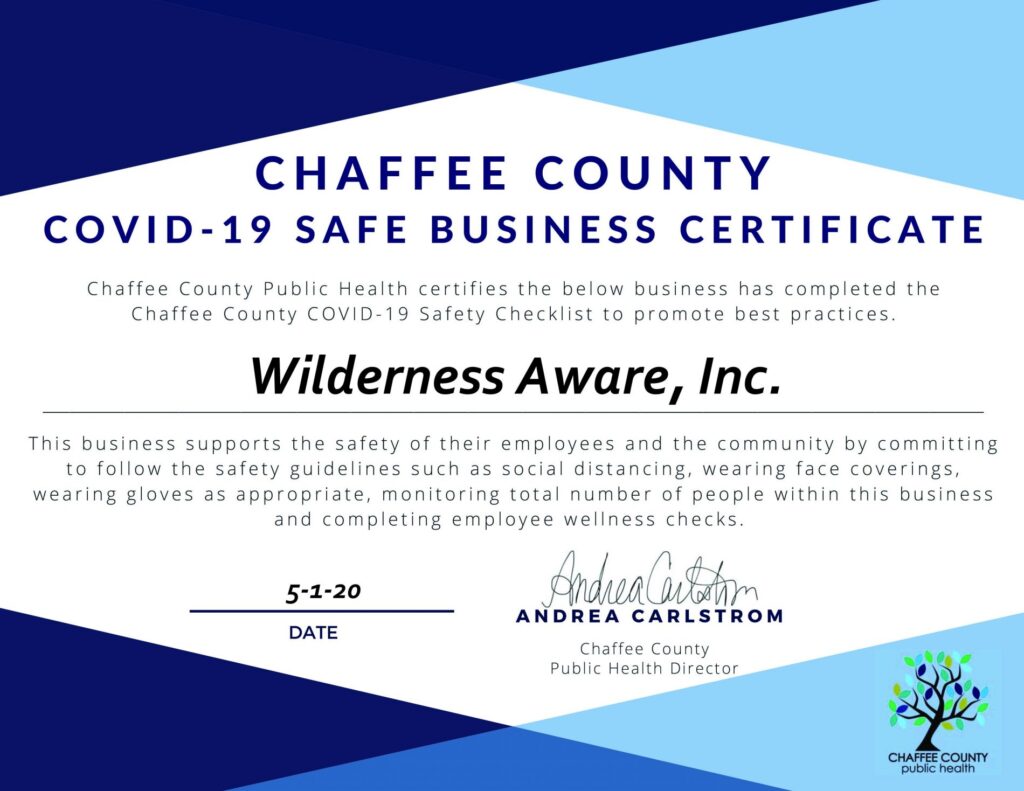
Rafting trips are open to Chaffee County, CO residents ONLY through May 31st. ALL rafting trips will begin on June 1st, 2020 for non-resident visitors to Chaffee County. We encourage you start planning and book your trip soon! Please note that we will not be offering our complimentary continental breakfast this season due to self-serve food restrictions. We apologize for the inconvenience. We take the health and safety of each and every single guest and member of our staff very seriously. In order for us to begin our rafting operation, and receive the above certification, we must follow a strict set of procedures in the office, on river and in our vehicles. The following procedures are in place: • Signs placed at each public entrance to our office to inform customers that they should wear a mask or cloth face covering, avoid entering if they have a cough or fever, and maintain a minimum six-foot distance from one another. Cloth face-coverings will be available to purchase should any guest need one. • Employees must record a clock-in and clock out temperature every shift/day worked, and will be told to leave work if they become ill or told to remain at home if they become ill outside of work. • Employees are required to wear a cloth face covering when interacting with guests at the front desk, rental counter and in vehicles. Wilderness Aware will provide any employee with a cloth face covering if they are unable to provide their own. • Guests and employees are instructed to maintain at least six feet distance form customers and each other. Guests should expect customers to momentarily come closer to accept payment, hand over rental items, paddles and helmets and check lifejacket fittings. • Sign postings will state that no more than 6 people stand in line while waiting to purchase rental items and retail, and to stand a minimum of six feet from the next person in line. Employees will use verbal reinforcement to remind guests of this rule as it prevents guests from go over the crowd size minimum for enclosed spaces. • Employees have been assigned to disinfect all high-contact surfaces frequently – included but not limited to employee break room (3 x daily), guest and employee restrooms (one per hour minimum), other common areas (once per day minimum). The front desk, rental counter and other point of contact items such as pens will be disinfected as often as possible, and employees will discourage guests from touching retail items they do not intend to purchase. • Wilderness Aware will contact business will as little as contact as possible. This will include having all guests fill out a digital waiver, accessible online and in advance of the trip. • All food will be prepped in commercial-grade kitchen. The kitchen will be sanitized after the morning prep session and again after trips return at the end of the day. • Guests will not be allowed to serve their own food if a meal is provide on their trip. Meals with either be pre-packaged (as is the case for all day trips that lunch is provided), or will be served by the guides (as is the case for all meals on multi-day trips). Our complimentary continental breakfast will be suspended for this summer due to this restriction. • Hand sanitizer is to be used by each passenger when entering our shuttle vehicles. • The number of passengers has been reduced by 50% of the vehicles occupancy, and passengers sit in locations to maximize social distancing. • Passengers, guests and guides will wear non-medical, cloth face-coverings when in a shuttle vehicle containing more than one person. • Windows will remain open and ventilation is increased in all shuttle vehicles. • All high-contact surfaces of the vehicle are disinfected at the end of each day.
7 Ways to Help Protect Our Rivers at Home
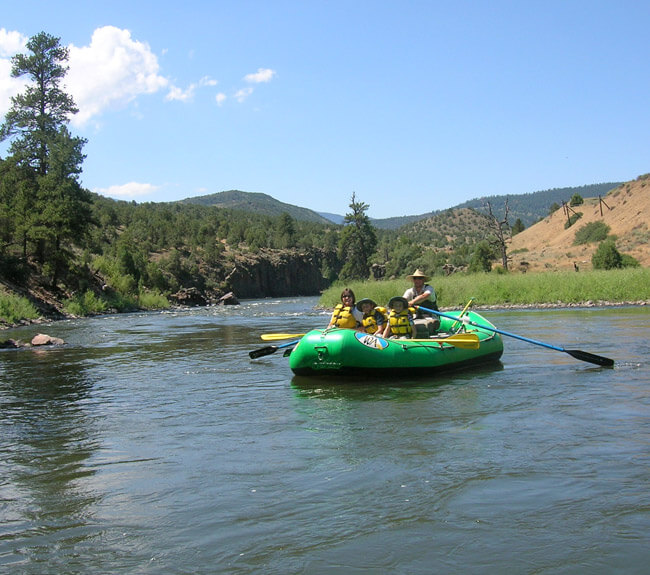
How You Can Help Protect Rivers at Home 1. Use Biodegradable Cleaning Products At home and on the river, use biodegradable cleaning products and earth-friendly body products to help protect our rivers. All of that and chemicals get washed down the drain and back to the rivers. 2. Wash Your Clothes and Dishes Responsibly When using your washing machine and dish washer, keep a full load as it uses less water due to the volume the clothes and dishes take up. Turn off auto-dry and open up the dishwasher to let the dishes air dry naturally. 3. Time Your Showers At 5 gallons per minute, a 10 minute shower uses 50 gallons of water. If you drank 1 gallon of water per day, that’s 50 days’ worth of water down the drain in 10 minutes. 4. Conserve Water When Brushing Turn off the water when you brush your teeth or fill a cup with water that you’ll use so that perfectly good water isn’t going straight down the drain. 5. Conserve Energy Turn off lights when not in use and unplug chargers. Energy production requires water to cool thermal power plants and for extraction, transport, and processing in fuel production. 6. Participate in Meatless Mondays Participating in Meatless Mondays not only does it give you variety and creativity in your meals, it takes about 600 gallons of water to make a hamburger patty due to the amount of water used to grow feed crops and water cattle. 7. Pick up Trash Pick up trash and litter and toss it in the recycling or garbage cans. Lots of trash is washed down storm sewers and back to the rivers. For those of you who worry that your small actions won’t make a difference, consider everybody that you share this information with, those who already make an effort, and how all these actions will collectively and positively improve the health of our rivers. Check out this list of 50 Ways to Save Your River for more ideas on how you can help. Wilderness Aware Rafting is the only Colorado rafting company that is 100% fueled off of wind and solar power. Our fleet of busses are emission friendly and we do our best to educate our customers on the importance of protecting our rivers and outdoor spaces. We’d love to take you out on a Buena Vista rafting adventure! Visit our website for more information about our Browns Canyon rafting trips and more. Thank you for helping to protect our rivers!
FIBArk, America’s Oldest and Boldest Whitewater Festival!

According to their website, “FIBArk aims to promote, preserve, protect, and enhance whitewater paddle sports in the greater Salida area through education, competition, and commemoration.” What does this actually involve? Glad you asked! FIBArk follows the fun of PaddleFest occurring the third weekend of June in Riverside Park, Salida – less than 30 minutes away from our Buena Vista headquarters. The event engulfs the town and attracts whitewater aficionados from all around the world. The first FIBArk festival occurred in 1949; the name itself is an acronym for “First in Boating The Arkansas”. There is endless entertainment at FIBArk, but the pinnacle event, the reason people travel from around the world to be there is for the whitewater boat races. Back in 1949 six brave crews paddled down the Arkansas in an attempt to take on 57 miles of river spanning from Salida to the other end of the Royal Gorge in Cañon City. Only two boaters completed the course. The next year, officials decided to shorten the course to 45 miles cutting out the gnarly Royal Gorge portion to end at Parkdale. This too was too ambitious, only one out of the 10 boaters made it to the end. Fortunately the old adage, “Third time’s the charm” proved itself true when the course was cut to 25.7 miles spanning from Salida to Cotopaxi. This eliminated the need for portages and ten out of the eleven boaters completed the course. Today, we still use these sections of the river for the race making it the longest whitewater race in the United States. In these early years, participants would use every conceivable vessel to float down the river: DIY converted airplane bellies, pontoons, and catamarans. These creative watercrafts eventually lead to one of the most fun events of FIBARK: The Hooligan Races. The rules for entering are extremely straightforward: “anything that floats that’s not a boat,” is fair game! While extremely entertaining both for spectators to watch and participants to navigate, these unorthodox vessels typically don’t fare so well in terms of taking on the rapids… The most successful in the early days of FIBArk were the sit-inside kayaks. Their maneuverability and lightweight made them ideal for navigating the rapids along the river. This opened the door for Slalom races. In the early 1950’s these races were gaining popularity throughout Europe, however they were nonexistent in the United States. FIBArk changed this thus becoming the birthplace of whitewater racing competitions. Boaters from around the world were invited to take on the challenging course where they were judged on their ability to clear gates. Point are docked for missing gates or hitting them and the racer who is able to make it through with the least amount of these errors and fastest time wins. Slalom racing is now an Olympic sport with many athletes training right here on the Arkansas River. Today, FIBArk is so much more than a series of races. The festival, while officially a three day affair, truly spans over the course of the week. There is a carnival, beer garden, live music spanning throughout the day and into the evening, a parade, seminars for new paddlers and those looking to improve their skills, and so much more! Book your Colorado white water rafting trip and make the most of your time in the Arkansas River Valley by checking out FIBArk this summer.
Why CFS Matters
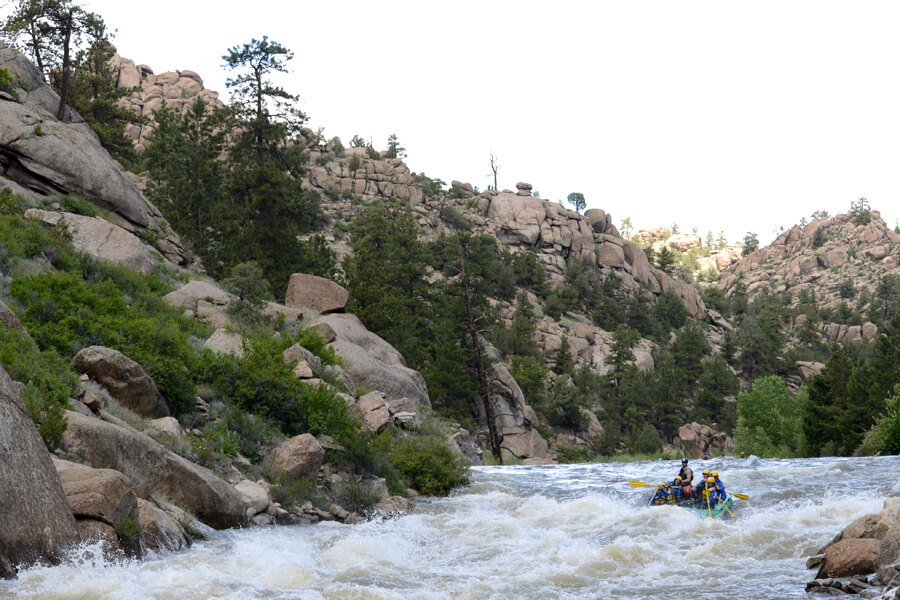
CFS or Cubic Feet per Second is the unit of measurement used for determining the “speed” of a river. Pay attention to this number when booking your trip as you soon will learn, water levels make a BIG difference on your whitewater rafting experience! When I first moved to Buena Vista, I noticed what seemed like an obsession with the mysterious acronym “CFS”. Any mention of my role at Wilderness Aware Rafting, and someone would immediately ask, “What’s the CFS like right now?”. Having never gone whitewater rafting before, “CFS” was a completely foreign term. A trip down one of our most advanced sections of whitewater rafting (The Numbers) on my second day in town, quickly taught me the importance of paying attention to CFS and where the local obsession with CFS levels came from! I like to think of CFS in as if it were a thermometer. Similar to how a humid 80˚ day is significantly different to a snowy 29˚ day, the range in numbers for CFS is just as impactful. A river during high CFS flows will feature larger rapids, bigger waves, and completely different terrain than from when CFS flows are low. Both conditions have their perks, depending on what you are hoping to get when booking your Colorado whitewater rafting trip! What to Expect During High CFS If the rivers are flowing above 2,000 CFS this is officially high water! Woohoo! High water conditions are my favorite time to go rafting. There is much more action and adrenaline charged waves and drops come with every turn of the river. Plan on getting soaked! The higher the CFS, the more advanced the trip, so first time rafters are advised to start with one of our Browns Canyon National Monument trips before taking on the Class V sections that require more technical paddling like The Numbers or Royal Gorge. When rivers are flowing at a faster rate, it is of upmost importance to listen and follow guide commands. Your guide is depending on guests to paddle with full force to compensate for the speed of the river. Higher flows mean less room for error since your guide will have much less time to readjust and maneuver the raft to avoid obstacles if the paddle crew is unable to follow the original route. Typically high CFS flows occur late June – early July when the majority of the snowpack is melting. What to Expect During Low CFS While I’m more of an adrenaline junkie, I certainly can appreciate the way my favorite butterfly inducing rapids mellow out during low CFS. A calmer river means more time to relax and enjoy the gorgeous scenery whitewater rafting immerses you in. For first time rafters who are a little nervous about what to expect, I suggest scheduling your trip during low water conditions. The slower pace takes the pressure off remembering whether or not to back-paddle when your guide calls for a left turn. There is more room for readjusting lines and less risk of flipping should you hit an obstacle. Families with small children or those who may not want to paddle have the option of zero paddling on trips as well since we are able to mount oars on our rafts for your guide to row instead. (It’s super easy to arrange, just ask!) If you’re hoping to take a lot of photos, I suggest going during low flows as well. There will be more opportunities since constant paddling is not as necessary as during high flows. Low flows kick off the season starting Memorial Day and last until about mid June, then pick up again mid July – August. Now that you have a better idea of what to expect, get out there! Call us at 1-800-In A RAFT (1-800-462-7238) or book your Colorado white water rafting adventure online.
How Our Snow Pack Impacts Summer River Flow Levels
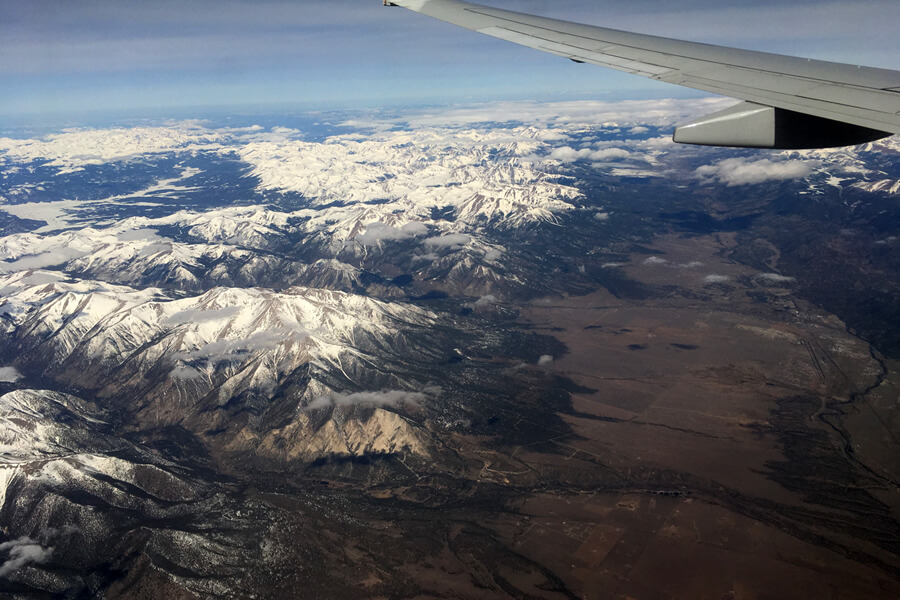
Ever wonder how our winter snow influences the river? During the winter the snow doesn’t do too much for our water levels. However, as the temperature rises in the springtime, runoff and stream flow in the river is directly attributed to melting snow and ice. Mountains like the Collegiate Peaks surrounding Buena Vista act as natural reservoirs, storing precipitation from the cooler season, we call this phenomenon “Snow Pack”. As the name implies, this is literally the amount of snow packed at the top of the mountains that melts during spring and summer to feed our rivers. Up to 75% of water supplies in the western United States are derived from snowmelt, so this snowpack levels are certainly worth noting when planning your whitewater rafting vacation. Water levels rise dramatically when we enter the summer rafting season because the snowmelt is making its way down the mountains and into our rivers. This is what accounts for the wide range in CFS. Snowmelt can cause nearly all of the stream flow in a river. If you ever are visiting us in the winter, you’ll notice even sections known for their rowdy rapids like The Numbers seem pretty easy going this time of year. Since the Arkansas River headwaters are located just north of us in Leadville, we see the direct impact of varying snowpack levels year over year. The better the winter, the better the rafting! Typically mid to late June sees the highest water levels. Last summer we enjoyed an incredible high water rafting season and with the historic amount of snow we received this winter, we are eagerly awaiting the Memorial Day opening of our season! Don’t miss out this summer – secure your trip today by giving us a call at 1-800-IN A RAFT (1-800-462-7238) or book your whitewater rafting now online!
First Timer’s Guide to PaddleFest
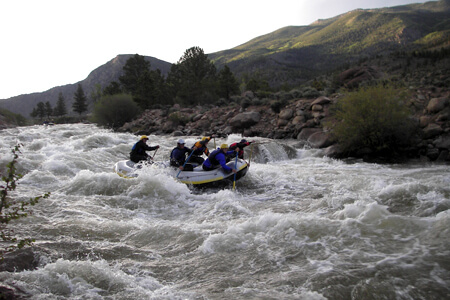
Nestled between Pike’s National Forest and the Collegiate peaks, is the cozy town of Buena Vista, Colorado. With a Main Street that still in fact is the main street and just one stoplight, this quaint town is flooded with energy and the spirit of summer every year as PaddleFest kicks off the whitewater rafting season. Buena Vista’s PaddleFest originally started as a simple gear swap get together held every spring. River rats would strike deals, exchanging PFDs for drysuits at the beginning of the season, stocking up on whitewater essentials for the summer ahead. Eventually word of mouth spread making this event one of the largest paddlesports gear swaps in the state of Colorado! Embracing the opportunity, the community of Buena Vista partnered with BV based CKS, Colorado’s largest paddlesports retailer, to put on the amazing event as we know it today. Held every Memorial Day weekend in the park adjacent to Buena Vista’s Main Street, PaddleFest is now a multi day event, attracting thousands of whitewater aficionados. As one of the first whitewater rafting outfitters established in the Arkansas River Valley, community involvement is one of our core values. Since PaddleFest is all about embracing the outdoors and sharing it with others, we encourage our guides to get involved and partner with local organizations. During PaddleFest, it’s pretty common for guests to bump into their guide volunteering at one of the booths. With so much going on, the activity options can be a bit overwhelming. The good news is, you won’t go wrong no matter what you end up doing – PaddleFest is a guaranteed good time. That being said, here is a checklist we put together of our favorite PaddleFest activities, the ones you surely won’t want to miss! – Professional + Ameteur SUP Competition – Fitness Workshops – Kayak + SUP Demos – Kids’ Clinics – Kayak Rodeo – Bike + Running Races – Yoga in the Park Hosted by jalaBlu Yoga – Food Trucks/Booths – Eddyline Brewery Beer Garden + Deerhammer Distillery Tent – Live Music – Local Vendors – Arkansas River Play Park PaddleFest is dedicated towards educating the next generation about outdoor recreation, and providing youth with safe, fun access to outdoor activities. There are many opportunities for expert enthusiasts and those who are just entering the world of paddlesports to learn new skills, test out gear, and prepare for a summer filled spending time outside. This summer why not see what all the fun is about? Even if you can’t make it to PaddleFest, you’ll find the same energy exuded throughout town all summer long. Buena Vista is a community eager to share its love of the river with others. Book your trip today!
